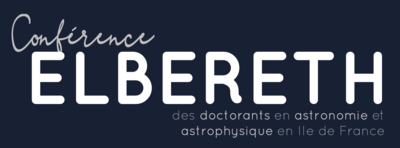Orateur
Description
By 2023, the Vera C. Rubin observatory will leap forward by generating the largest optical sky survey ever made called the Legacy Survey of Space and Time (LSST). Each night, the LSST will produce a stream of over 10 million alerts that will need to be classified in real-time.
The LSST will rely on alert brokers to process and redistribute this massive alert flow to the scientific community. Among the different brokers selected by Rubin, Fink is an international team of scientists with a large variety of scientific interests, including among others multi-messenger astronomy, supernovae, solar system, anomalies identification, micro-lensing and gamma-ray bursts optical counterparts. The broker is currently deployed in the cloud at IJCLab, Orsay, and it processes the alert stream of the Zwicky Transient Facility as a pathfinder of the LSST.
My PhD thesis aims to analyze this alert stream with state-of-the-art computer science approaches -- to deal with the large flux of data from LSST -- and especially search for optical counterparts to Gamma Ray Bursts (GRB) detected by the SVOM mission. As a large part of the alerts can behave like GRB counterparts during the early stage of the emissions, we need to filter them. The main contaminants are the moving objects in the sky such as objects from the solar system (SSO). A robust algorithm dedicated to the detection of new SSO will be presented. Finally, the detectability and the methods that will be developed for the detection of GRB counterparts in the LSST alert stream will be presented to open the future work of this thesis.
| Field | Compact objects (supernovae, black holes, neutron stars) |
|---|

